Lugares de interés (POIs) del Mapa
0: Amsterdam
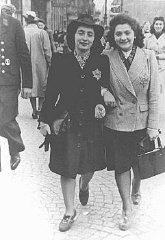 The Germans occupied the Netherlands on May 10, 1940, and established a civilian administration dominated by the SS (the elite guard of the Nazi state). Amsterdam, the country"s largest city, had a Jewish population of about 75,000, which increased to over 79,000 in 1941. Jews represented less than 10 percent of the city"s total population. More than 10,000 of these were foreign Jews who had found refuge in Amsterdam in the 1930s.READ MORE  |
Más sobre Amsterdam
1: Auschwitz
 The Auschwitz concentration camp complex was the largest of its kind established by the Nazi regime. It included three main camps, all of which deployed incarcerated prisoners at forced labor. One of them also functioned for an extended period as a killing center. The camps were located approximately 37 miles west of Krakow, near the prewar German-Polish border in Upper Silesia, an area that Nazi Germany annexed in 1939 after invading and conquering Poland. The SS authorities established three main camps near the Polish city of Oswiecim: Auschwitz I in May 1940; Auschwitz II (also called Auschwitz-Birkenau) in early 1942; and Auschwitz III (also called Auschwitz-Monowitz) in October 1942. READ MORE  |
Más sobre Auschwitz
2: Babi Yar
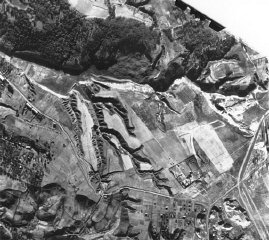 Kiev was the capital of the Soviet Ukraine when the Germans invaded the Soviet Union in June 1941. Some 160,000 Jews resided in Kiev, comprising about 20 percent of the city"s population. READ MORE  |
Más sobre Babi Yar
3: Belzec
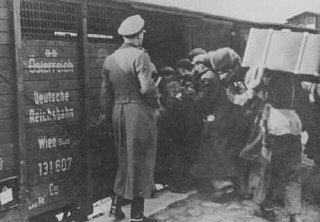 The small town of Belzec was located in southeastern Poland between the cities of Zamosc and Lvov (Lviv). During the German occupation of Poland in World War II, this area was located in the Lublin District of the Generalgouvernement (that part of German-occupied Poland not directly annexed to Germany, attached to German East Prussia or incorporated into the German-occupied Soviet Union). READ MORE  |
Más sobre Belzec
4: Bergen-Belsen
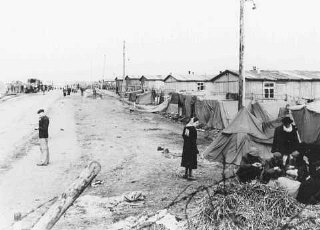 The Bergen-Belsen camp was first established in 1940 south of the small towns of Bergen and Belsen, about 11 miles north of Celle, Germany. Until 1943, Bergen-Belsen was a prisoner-of-war camp. At first, French and Belgian prisoners of war were held there and, after 1941, Soviet prisoners of war. Many of these inmates died of starvation or disease due to deliberate neglect. READ MORE  |
Más sobre Bergen-Belsen
5: Berlin
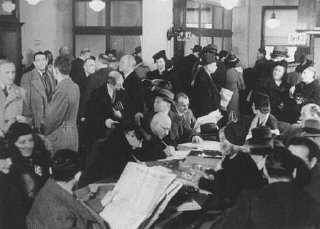 According to a census of June 16, 1933, the Jewish population of Berlin, Germany"s capital city, was about 160,000. Berlin"s Jewish community was the largest in Germany, comprising more than 32 percent of all Jews in the country. In the face of Nazi persecution, many Jews emigrated from Berlin. Berlin"s Jewish population fell to about 80,000 people as a result of emigration from Nazi Germany between 1933 and 1939, despite the movement of other German Jews to Berlin. READ MORE  |
Más sobre Berlin
6: Bialystok
According to the terms of the German-Soviet Pact of 1939, Bialystok, a city in northeastern Poland, was assigned to the Soviet zone of occupation. Soviet forces entered Bialystok in September 1939, and held it until the German army occupied the city in June 1941 following the German invasion of the Soviet Union. In the early days of the German occupation, Einsatzgruppe (mobile killing unit) detachments and Order Police battalions rounded up and killed thousands of Jews in Bialystok. READ MORE  |
Más sobre Bialystok
7: Breendonk
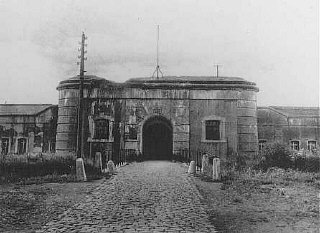 The Breendonk internment camp was located in a Belgian fortress built in the beginning of the twentieth century along the Antwerp-Brussels highway. Originally one in a chain of fortresses constructed to defend Belgium against a German attack, Breendonk was near the town of the same name, about 12 miles southwest of Antwerp. It was surrounded by high walls and a water-filled moat, and measured 656 by 984 feet. In August 1940, the Germans, who had occupied Belgium in May of that year, turned the fortress into a detention camp. READ MORE  |
Más sobre Breendonk
8: Buchenwald
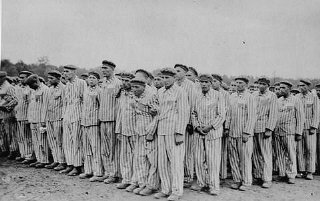 Buchenwald was one of the largest concentration camps established by the Nazis. The camp was constructed in 1937 in a wooded area on the northern slopes of the Ettersberg, about five miles northwest of Weimar in east-central Germany. Before the Nazi takeover of power, Weimar was best known as the home of Johann Wolfgang von Goethe, who embodied the German enlightenment of the eighteenth century, and as the birthplace of German constitutional democracy in 1919, the Weimar Republic. During the Nazi regime, "Weimar" became associated with the Buchenwald concentration camp. READ MORE  |
Más sobre Buchenwald
9: Budapest
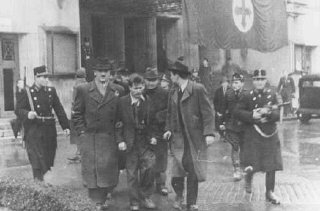 Hungary"s capital, Budapest, straddles the banks of the Danube River and is the country"s most populous city. Budapest was created by the union of three cities: Buda, Obuda, and Pest. Before World War II, approximately 200,000 Jews lived in Budapest, making it the center of Hungarian Jewish cultural life. In the late 1930s and early 1940s, Budapest was a safe haven for Jewish refugees. Before the war some 5,000 refugees, primarily from Germany and Austria, arrived in Budapest. With the beginning of deportations of Jews from Slovakia in March 1942, as many as 8,000 Slovak Jewish refugees also settled in Budapest. READ MORE  |
Más sobre Budapest
10: Chelmno
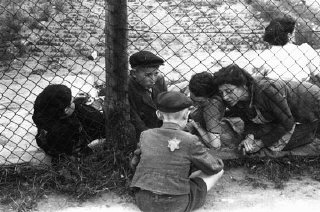 The village of Chelmno (Ger.: Kulmhof) is located about 30 miles northwest of Lodz along the Ner River, a tributary of the Warta River in todays west central Poland. Under German occupation in World War II, Chelmno was located in the Wartheland administrative unit (seat Poznan/Posen). SS and police authorities established the Chelmno killing center in order to annihilate the Jewish population of the Wartheland, including the inhabitants of the Lodz ghetto. It was the first stationary facility where poison gas was used for mass murder of Jews. READ MORE  |
Más sobre Chelmno
11: Dachau
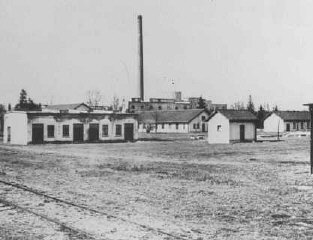 Established in March 1933, the Dachau concentration camp was the first regular concentration camp established by the National Socialist (Nazi) government. Heinrich Himmler, in his capacity as police president of Munich, officially described the camp as "the first concentration camp for political prisoners." It was located on the grounds of an abandoned munitions factory near the northeastern part of the town of Dachau, about 10 miles northwest of Munich in southern Germany. READ MORE  |
Más sobre Dachau
12: Danzig
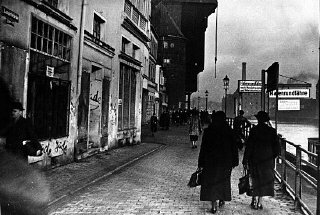 In the 1919 Treaty of Versailles, the victorious powers of World War I (the United States, Great Britain, France, and other allied states) imposed punitive territorial, military, and economic treaty terms on defeated Germany. One provision required Germany to cede West Prussia to the newly reconstructed state of Poland. Danzig, largely an ethnically German city, became a "free city" under the protection of the League of Nations (the worldwide organization of states established by the treaty), but with special administrative ties to Poland. READ MORE  |
Más sobre Danzig
13: Dora-Mittelbau
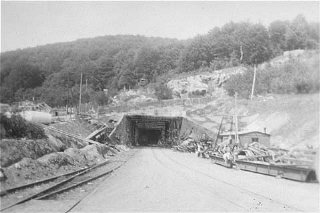 The Dora-Mittelbau (also known as Dora-Nordhausen or Nordhausen) camp was established in central Germany near the southern Harz Mountains, north of the town of Nordhausen. It was originally a subcamp of Buchenwald. Prisoners from Buchenwald were sent to the area in 1943 to begin construction of a large industrial complex. In October 1944, the SS made Dora-Mittelbau an independent concentration camp with more than 30 subcamps of its own. READ MORE  |
Más sobre Dora-Mittelbau
14: Drancy
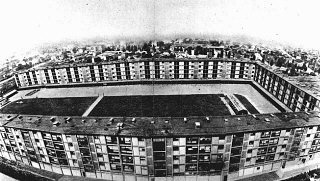 The Drancy camp, named after the northeastern suburb of Paris in which it was located, was established by the Germans in August 1941 as an internment camp for foreign Jews in France; it later became the major transit camp for the deportations of Jews from France. Until July 1, 1943, French police staffed the camp under the overall control of the German Security Police. In July 1943 the Germans took direct control of the Drancy camp and SS officer Alois Brunner became camp commandant. READ MORE  |
Más sobre Drancy
15: Feldafing
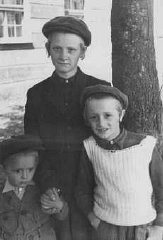 Feldafing was the first all-Jewish DP camp and hosted a large and important community of survivors. Originally a summer camp for Hitler Youth, Feldafing was located 20 miles southwest of Munich in the American zone of occupation. The first director of the camp was Lieutenant Irving J. Smith. READ MORE  |
Más sobre Feldafing
16: Flossenbuerg
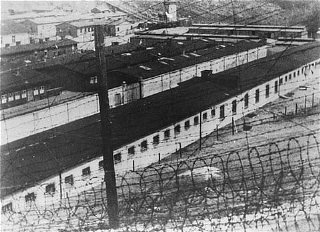 In May 1938, the SS Economic-Administrative Main Office established the Flossenbuerg concentration camp in the mountains of upper Bavaria near the prewar border with Czechoslovakia. Flossenbuerg was a men"s camp primarily for so-called "asocial" or "criminal" prisoners. The SS used the prisoners as forced laborers in the nearby stone quarries of the SS-owned and -operated German Earth and Stone Works company. READ MORE  |
Más sobre Flossenbuerg
17: Gardelegen
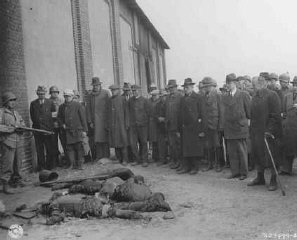 In 1945, as Allied troops penetrated Nazi Germany, the SS began evacuating prisoners from concentration camps in outlying areas on death marches to the interior of the Reich. It was part of a desperate and hopeless effort to keep the war effort going and to prevent the inmates from falling into enemy hands, where they could testify against their persecutors. READ MORE  |
Más sobre Gardelegen
18: Gross-Rosen
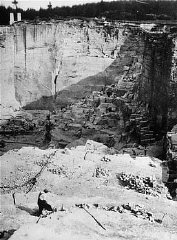 The Gross-Rosen concentration camp was originally established in 1940 as a subcamp of the Sachsenhausen concentration camp. The camp was named for the nearby village of Gross-Rosen. Now called Rogoznica, the village is approximately 40 miles southwest of Wroclaw in present-day western Poland. In 1941, Gross-Rosen was designated an autonomous concentration camp. READ MORE  |
Más sobre Gross-Rosen
19: Gurs
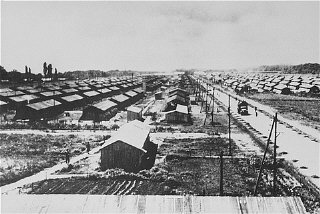 The Gurs camp was one of the first and largest camps established in prewar France. It was located in the Basque region of southwestern France, just to the south of the village of Gurs. The camp, about 50 miles from the Spanish border, was situated in the foothills of the Pyrenees Mountains northwest of Oloron-Sainte-Marie. READ MORE  |
Más sobre Gurs
20: Gusen
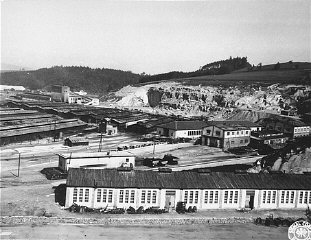 The Gusen concentration camp was originally a subcamp of the Mauthausen concentration camp. Gusen had been established in 1940 to house Mauthausen prisoners closer to the stone quarries where they were forced to work. As the war expanded, so did Gusen, which became an independent concentration camp by late 1944. The camp earned a reputation for its harsh conditions and the high prisoner mortality rate. Of a total of 68,000 prisoners, nearly 37,000 died as a result of disease, cruelty, gassing, and shooting. After 1943, Gusen provided forced labor for assembling fuselages for Messerschmitt fighters. READ MORE  |
Más sobre Gusen
21: Hadamar
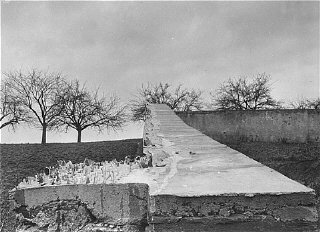 As the 2nd Infantry Division marched across Germany, it uncovered several sites of Nazi crimes. In early April 1945, the unit captured the German town of Hadamar, which housed a psychiatric clinic where almost 15,000 men, women, and children were killed between 1941 and March 1945 in the Nazi "euthanasia" program. READ MORE  |
Más sobre Hadamar
22: Janowska
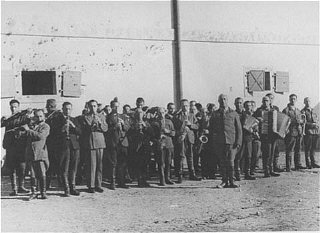 In September 1941, the Germans set up a factory on Janowska Street in the northeastern suburbs of Lvov, in southeastern Poland. This factory became part of a network of factories, the German Armament Works, owned and operated by the SS. Jews were used as forced laborers, mainly in carpentry and metalwork. In October 1941, the Germans established a camp housing the forced laborers next to the factory. READ MORE  |
Más sobre Janowska
23: Jasenovac
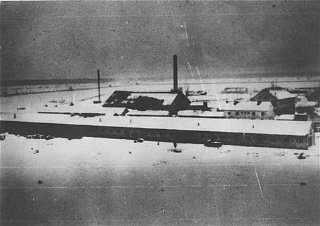 The Jasenovac camp complex consisted of five detention facilities established between August 1941 and February 1942 by the authorities of the so-called Independent State of Croatia. As Germany and its Axis allies invaded and dismembered Yugoslavia in April 1941, the Germans and the Italians endorsed the proclamation of the so-called Independent State of Croatia by the fanatically nationalist, fascist, separatist, and terrorist Ustaa organization on April 10, 1941. READ MORE  |
Más sobre Jasenovac
24: Kamenets-Podolski
| Kamenets-Podolski, a city in the western Ukraine, then part of the Soviet Union, was occupied by German forces during the invasion of the Soviet Union in June 1941. Shortly after Hungary (Germany"s ally) declared war on the Soviet Union on June 27, 1941, officials of the agency responsible for foreign nationals living in Hungary decided to deport foreign Jews; these were mostly Polish and Russian Jews, but there were also many refugees from western Europe. Jews who could not readily establish Hungarian citizenship were equally vulnerable to deportation. As a result, many Hungarian Jews who could not document their citizenship were also deported. Many Jewish communities, especially in the Transcarpathian Ukraine (then under Hungarian control), were deported in their entirety. READ MORE  |
Más sobre Kamenets-Podolski
25: Kaufering
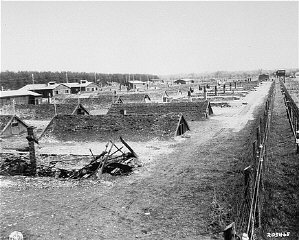 With the intensification of the Allied air war against German industrial and military enterprises after 1943, the German Armaments Ministry and the SS agreed to accelerate construction of massive underground factories, using large numbers of conscripted laborers and concentration camp prisoners. Hundreds of satellite camps attached to major concentration camps were established throughout the German Reich in 1944 and 1945. Inmates were compelled to hollow out the sides of mountains or caves for immense systems of tunnels and factories that would be secure from Allied bombs. Those who survived these tasks were often used to build new weaponry, such as the Messerschmitt 262 (ME-262) jet-fighter or V-2 rockets. READ MORE  |
Más sobre Kaufering
26: Kiev
 Kiev was the capital of the Soviet Ukraine when the Germans invaded the Soviet Union in June 1941. Some 160,000 Jews resided in Kiev, comprising about 20 percent of the city"s population. Approximately 100,000 Jews fled Kiev in advance of the German occupation. German forces entered Kiev on September 19, 1941. Along with the rest of the Ukraine, the city was incorporated into the Reichskommissariat Ukraine, headed by East Prussian Nazi district leader Erich Koch. During the first days of the German occupation, two major explosions, apparently set off by Soviet military engineers, destroyed the German headquarters and part of the city center. The Germans used the sabotage as a pretext to murder the remaining Jews of Kiev. At that time, there were about 60,000 Jews in the city. Most of those who remained were women, children, the elderly, and the sick who had been unable to flee. READ MORE  |
Más sobre Kiev
27: Kovno
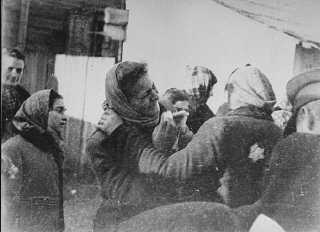 Between 1920 and 1939, Kovno (Kaunas), located in central Lithuania, was the country"s capital and largest city. It had a Jewish population of 35,000-40,000, about one-fourth of the city"s total population. Jews were concentrated in the city"s commercial, artisan, and professional sectors. Kovno was also a center of Jewish learning. The yeshiva in Slobodka, an impoverished district of the city, was one of Europe"s most prestigious institutions of higher Jewish learning. Kovno had a rich and varied Jewish culture. The city had almost 100 Jewish organizations, 40 synagogues, many Yiddish schools, 4 Hebrew high schools, a Jewish hospital, and scores of Jewish-owned businesses. It was also an important Zionist center. READ MORE  |
Más sobre Kovno
28: Krakow
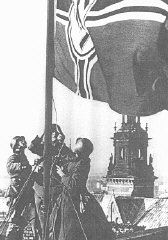 The city of Krakow (Cracow) is in southern Poland. Before 1918, it was the seat of the Austrian province of Galicia. In 1939 60,000 Jews resided in Krakow, almost one-quarter of a total population of about 250,000. The German army occupied Krakow in the first week of September 1939. Persecution of the Jews began immediately and intensified after the Germans declared Krakow the capital of the Generalgouvernement, that area of Poland which Germany did not annex directly to its eastern provinces. In the city, Wawel Castle became the residence of Nazi lawyer Hans Frank, who had been appointed Governor General of Poland. Montelupich prison became a German Security Police prison. In 1942, the Plaszow camp was established in the south of the city as a forced-labor camp for the Jews of Krakow and its environs. In 1944, Plaszow became a concentration camp. READ MORE  |
Más sobre Krakow
29: Lodz
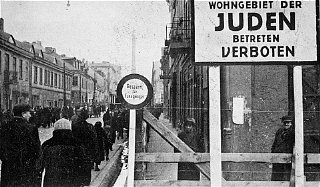 The city of Lodz is located about 75 miles southwest of Warsaw, Poland. The Jews of Lodz formed the second largest Jewish community in prewar Poland, after Warsaw. German troops occupied Lodz one week after Germany invaded Poland on September 1, 1939. Lodz was annexed to Germany as part of the Warthegau. The Germans renamed the city Litzmannstadt, after a German general, Karl Litzmann, who had captured the city during World War I. In early February 1940, the Germans established a ghetto in the northeastern section of Lodz. About 160,000 Jews, more than a third of the city"s population, were forced into a small area. READ MORE  |
Más sobre Lodz
30: Lublin
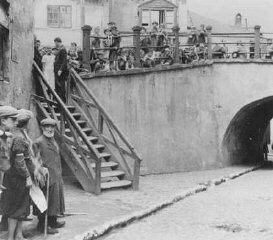 The Lublin concentration camp received its more widely known nickname Majdanek (Little Majdan) due to its proximity to the Majdan Tatarski suburb of Lublin, the capital of the Lublin District in the so-called Generalgouvernement (that part of German-occupied Poland not directly annexed to Germany, attached to German East Prussia or incorporated into the German-occupied Soviet Union). The camp was located three miles east southeast of Lublin on the road that led to Chelm. READ MORE  |
Más sobre Lublin
31: Lvov
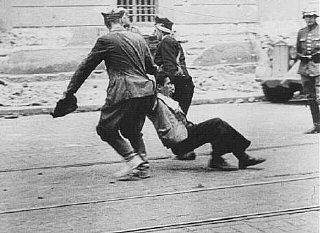 The city of Lvov (Lviv) in southeastern Poland was occupied by the Soviet Union in 1939, under the terms of the German-Soviet Pact. There were over 200,000 Jews in Lvov in September 1939; nearly 100,000 were Jewish refugees from German-occupied Poland. The Germans subsequently occupied Lvov after the invasion of the Soviet Union in June 1941 Encouraged by German forces to begin violent actions against the Jewish population in Lvov, Ukrainian nationalists massacred about 4,000 Jews in early July 1941. Another pogrom, known as the Petliura Days, was organized in late July. This pogrom was named for Simon Petliura, who had organized anti-Jewish pogroms in the Ukraine after World War I. For three days, Ukrainian militants went on a rampage through the Jewish districts of Lvov. They took groups of Jews to the Jewish cemetery and to Lunecki prison and shot them. More than 2,000 Jews were murdered and thousands more were injured. READ MORE  |
Más sobre Lvov
32: Majdanek
 The Lublin concentration camp received its more widely known nickname Majdanek (Little Majdan) due to its proximity to the Majdan Tatarski suburb of Lublin, the capital of the Lublin District in the so-called Generalgouvernement (that part of German-occupied Poland not directly annexed to Germany, attached to German East Prussia or incorporated into the German-occupied Soviet Union). The camp was located three miles east southeast of Lublin on the road that led to Chelm. READ MORE  |
Más sobre Majdanek
33: Mauthausen
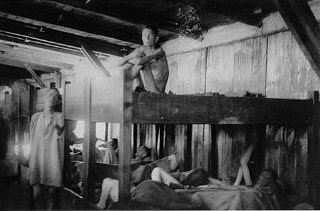 The Mauthausen concentration camp was established shortly after Germany annexed Austria in March 1938. It was built near an abandoned stone quarry, along the Danube River, about three miles from the town of Mauthausen in Upper Austria, 12.5 miles southeast of Linz. Construction began in July 1938 by a group of 300 prisoners who had been transferred from the Dachau concentration camp. By early October, Mauthausen held some 565 prisoners, mostly politicals and common criminals. By December 1939, the number had grown to 2,772 prisoners, primarily criminals, "asocials," political opponents, and religious objectors, including Jehovah"s Witnesses. Eventually, anti-Nazis from occupied countries were also brought to Mauthausen, as were a number of British and American military personnel. Until mid-1944, there were relatively few Jews at Mauthausen, but then they arrived in large numbers from Hungary and from Auschwitz and other camps. READ MORE  |
Más sobre Mauthausen
34: Mechelen
| In the summer of 1942, the Germans made preparations to deport the Jews of Belgium. They converted the Dossin de St. Georges military barracks in the city of Mechelen (Fr., Malines) into a transit camp. Mechelen, a city of 60,000, was considered an ideal location for this purpose. Located halfway between Antwerp and Brussels, two cities which contained most of the Jewish population of Belgium, the city had good rail connections to the east. READ MORE  |
Más sobre Mechelen
35: Minsk
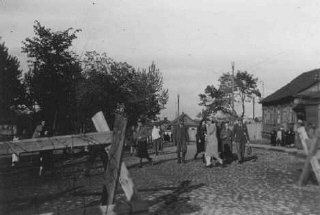 German forces occupied Minsk, capital of the Belorussian Soviet Socialist Republic (SSR) in the Soviet Union, shortly after the German invasion of the Soviet Union in June 1941. During the German occupation, the Belorussian SSR became part of the Reich Commissariat Ostland (Reichskommissariat Ostland). Within this German civilian administration, Minsk became a district capital. Wilhelm Kube, the German general commissioner of Belorussia, governed from Minsk. READ MORE  |
Más sobre Minsk
36: Monastir
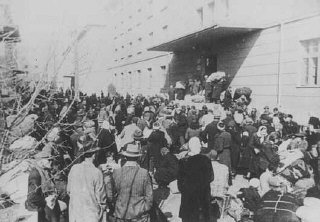 In 1941, some 78,000 Jews lived in Yugoslavia, including about 4,000 foreign or stateless Jews who had found refuge in the country during the 1930s. Although Yugoslavia had reluctantly joined the Axis alliance with Germany, the Yugoslav government was toppled by an anti-German military coup on March 27, 1941. Nazi Germany invaded the Balkan nations of Yugoslavia and Greece in early April 1941. Supported militarily by her Axis allies (Italy, Bulgaria, Hungary, and Romania), Germany quickly subdued the Balkans. Yugoslavia was partitioned among the Axis allies. Bulgaria annexed Yugoslav Macedonia (the area including the cities of Skopje and Bitola in southern Yugoslavia). READ MORE  |
Más sobre Monastir
37: Muhldorf
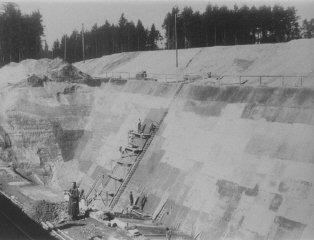 As the Allied air offensive against Nazi Germany intensified after 1943, the Nazi leadership decided to construct underground installations in order to produce weaponry and related war materiel. Accelerated construction of such facilities required significant outlay of human resources. The SS provided concentration camp prisoners to carry out the most dangerous tasks, such as hollowing out tunnels from mountainsides and caves, constructing subterranean factories, and hauling construction materials. To facilitate these immense projects, it set up hundreds of satellite camps close to proposed industrial sites in 1944 and 1945. READ MORE  |
Más sobre Muhldorf
38: Munkacs
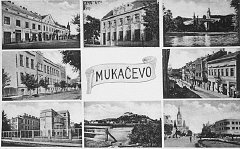 Munkacs (Hungarian; Munkatsh, phonetic; Mukachevo, Ukr.; Mukacevo, Czech and Slov.) was the commercial capital of the Transcarpathian region of Ukraine. Its many names reflect the cultural crossroads of its location. The town belonged to Hungary until 1920, to Czechoslovakia (1920-1938), and again to Hungary from 1938-1945. Interwar Munkacs had a very large Jewish population, which was most visible on the Sabbath. On that day most stores were closed and, after services, the streets filled with Hasidic Jews in their traditional garb. The first movie house in the town was established by a Hasidic Jew, and it too closed on the Sabbath and Jewish holidays. READ MORE  |
Más sobre Munkacs
39: Neuengamme
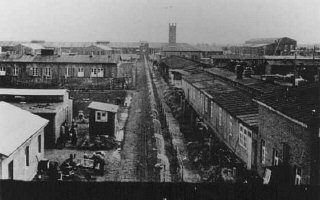 The SS established the Neuengamme camp in December 1938 as a subcamp of Sachsenhausen, close to Hamburg in northern Germany. Using the German Earth and Stone Works Corporation as a front for SS operations at Neuengamme, the SS brought about 100 prisoners from Sachsenhausen to the site to begin construction of the camp. The SS planned to use concentration camp labor to reopen and modernize a defunct brick works in the area. Prisoners from Neuengamme were also later used in forced-labor projects such as the regulation of Elbe River flooding and the construction of the Dove-Elbe canal in northern Germany. READ MORE  |
Más sobre Neuengamme
40: Odessa
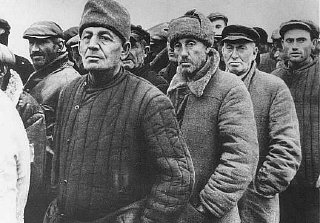 A Black Sea port in the southwestern Ukraine, Odessa had a population of nearly 600,000 in 1939. Roughly 180,000 were Jews, about 30 percent of the total. On June 22, 1941, Nazi Germany and its Axis allies, including Romania, invaded the Soviet Union. In August 1941, Romanian troops set siege to Odessa. The city surrendered on October 16, 1941. At least half of the city"s Jewish population had fled Odessa before Axis troops surrounded the city. Between 80,000 and 90,000 Jews remained in Odessa after the Romanian occupation. READ MORE  |
Más sobre Odessa
41: Ohrdruf
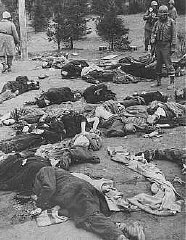 The Ohrdruf camp was a subcamp of the Buchenwald concentration camp, and the first Nazi camp liberated by U.S. troops. Created in November 1944 near the town of Gotha, Germany, Ohrdruf supplied forced labor in the form of concentration camp prisoners for railway construction leading to a proposed communications center, which was never completed due to the rapid American advance. In late March 1945, the camp had a prisoner population of some 11,700, but in early April the SS evacuated almost all the prisoners on death marches to Buchenwald. The SS guards killed many of the remaining prisoners who were too ill to walk to the railcars. READ MORE  |
Más sobre Ohrdruf
42: Paris
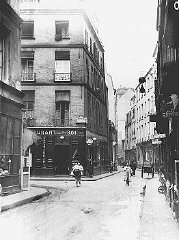 When the Germans invaded France in May 1940, about 175,000 Jews resided or had found refuge in Paris. Many initially left the city, only to return after the armistice was signed in June and Paris became the seat of the German military administration. The majority of Parisian Jews lived in the 4th, 11th, 18th, and 20th districts. By late September 1940, a German census registered 150,000 Jews in Paris, including 64,000 foreigners. READ MORE  |
Más sobre Paris
43: Plaszow
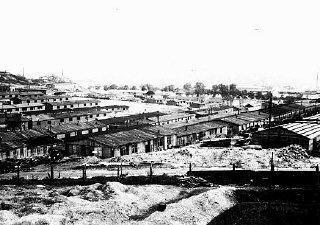 The Plaszow camp, established in 1942 under the authority of the SS and police leaders in Krakow (Cracow), was initially a forced-labor camp for Jews. The original site of the camp included two Jewish cemeteries. From time to time the SS enlarged the camp. It reached its maximum size in 1944, the same year that it became a concentration camp. Until that time, most of the camp guards were Ukrainian police auxiliaries chosen from among Soviet soldiers in German prisoner-of-war camps and trained at the Trawniki training camp in Lublin. READ MORE  |
Más sobre Plaszow
44: Riga
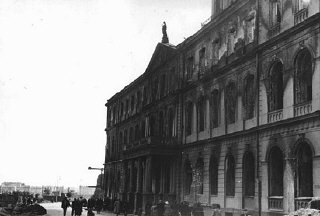 From 1918 to 1940, Riga was the capital of independent Latvia. Before World War II, about 40,000 Jews lived in Riga, representing slightly more than 10 percent of the city"s population. The community had a well-developed network of Hebrew and Yiddish schools, as well as a lively Jewish cultural life. Jews were integrated into most aspects of life in Riga and even sat on the city council. In August 1940, the Soviet Union annexed Latvia, and Riga became the capital of the Latvian SSR. German forces occupied Riga in early July 1941. Thereafter, Riga became the capital of the Reich Commissariat Ostland, a German civilian administration. READ MORE  |
Más sobre Riga
45: Rome
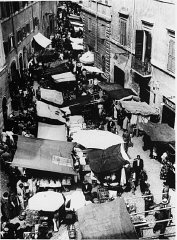 At the time of the German occupation of northern and central Italy in early September 1943, there were approximately 12,000 Jews living in Rome. The German occupiers sought to include Italian Jews in the "Final Solution". READ MORE  |
Más sobre Rome
46: Sachsenhausen
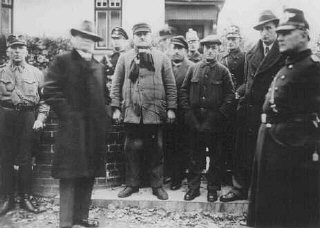 The Sachsenhausen concentration camp was the principal Nazi camp for the Berlin area. Located near the Oranienburg camp, north of Berlin, the Sachsenhausen camp opened on July 12, 1936, when the SS transferred 50 prisoners from the Esterwegen concentration camp to begin construction of the camp. In the early stage of its existence the Sachsenhausen camp held mainly political prisoners. READ MORE  |
Más sobre Sachsenhausen
47: Salonika
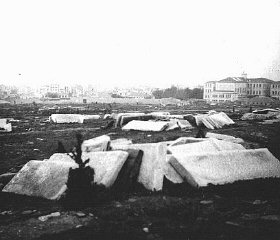 The city of Salonika is located in northern Greece. After the invasion and occupation of Greece in April 1941, Salonika was included in the German occupation zone. The city was occupied by German forces in early April. Before World War II, Salonika had the largest Jewish community in Greece. At the time of the German occupation, the Jewish population was about 50,000. Within a week of the occupation, the Germans arrested the Jewish leadership, evicted hundreds of Jewish families and confiscated their apartments, and expropriated the Jewish hospital for use by the German army. The Germans plundered tens of thousands of cultural and artistic property from Jewish academies, synagogues, and private homes, and sent it to Germany. READ MORE  |
Más sobre Salonika
48: Sobibor
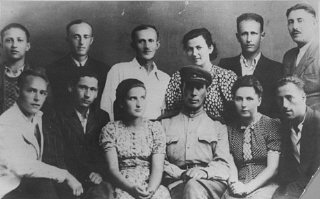 The small village of Sobibor is near the present-day eastern border of Poland, about three miles west of the Bug (Buh) River and five miles south of Wlodawa. During the German occupation of Poland, this area was in the Lublin District of the Generalgouvernement (that part of German-occupied Poland not directly annexed to Germany, attached to German East Prussia or incorporated into the German-occupied Soviet Union). READ MORE  |
Más sobre Sobibor
49: Stutthof
| In September 1939, the Germans established the Stutthof camp in a wooded area west of Stutthof (Sztutowo), a town about 22 miles east of Danzig (Gdansk). The area was secluded: to the north was the Bay of Danzig, to the east the Vistula Bay, and to the west the Vistula River. The land was very wet, almost at sea level. The camp was situated along the Danzig-Elbing highway on the way to the popular Baltic Sea resort town of Krynica Morska. Originally, Stutthof was a civilian internment camp under the Danzig police chief. In November 1941, it became a "labor education" camp, administered by the German Security Police. Finally, in January 1942, Stutthof became a regular concentration camp. READ MORE  |
Más sobre Stutthof
50: Tarnow
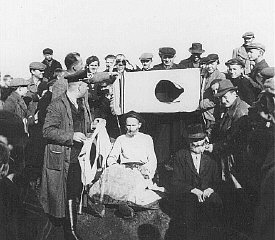 Before World War II, about 25,000 Jews lived in Tarnow, a city in southern Poland, 45 miles east of Krakow (Cracow). Jews--whose recorded presence in the town went back to the mid-fifteenth century--comprised about half of the town"s total population. A large portion of Jewish business in Tarnow was devoted to garment and hat manufacturing. The Jewish community was ideologically diverse and included both religious Hasidim and secular Zionists. READ MORE  |
Más sobre Tarnow
51: Theresienstadt
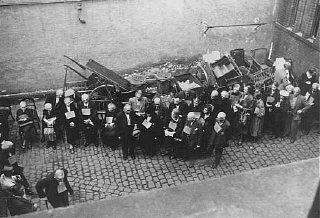 On November 24, 1941, the Germans established a Jewish ghetto in the fortress town of Terezin, Czechoslovakia. Known by its German name, Theresienstadt, until its liberation on May 8, 1945, it functioned as a ghetto and transit camp on the route to Auschwitz. Most of those imprisoned in Theresienstadt were German, Czech, Dutch, and Danish Jews; elderly and prominent Jews and Jewish veterans of World War I were also sent there. READ MORE  |
Más sobre Theresienstadt
52: Treblinka
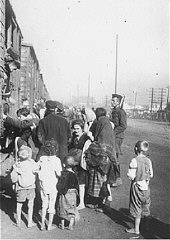 Operation Reinhard (also known as Aktion Reinhard) authorities chose the site for the Treblinka killing center in a sparsely populated area near the villages of Treblinka and Malkinia. Malkinia was located on the main Warsaw-Bialystok rail line, about 50 miles northeast of Warsaw, in the Generalgouvernement (that part of German-occupied Poland not directly annexed to Germany, attached to German East Prussia, or incorporated into the German-occupied Soviet Union). READ MORE  |
Más sobre Treblinka
53: Vienna
 The capital of a large multi-national empire under the German-speaking Habsburg dynasty for five centuries, Vienna after 1918 became the capital of the small Republic of Austria. With a population of 1.9 million, Vienna housed 28 percent of the country"s entire population in 1934. In 1938, some 170,000 Jews lived in the city, as well as approximately 80,000 persons of mixed Jewish-Christian background. Including converts from Judaism, the Viennese Jewish population may have been as high as 200,000, more than 10 percent of the city"s inhabitants. READ MORE  |
Más sobre Vienna
54: Vilna
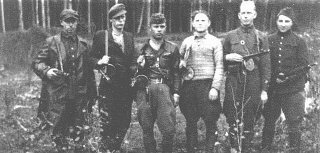 Poland and Lithuania both claimed Vilna (Vilnius) after World War I. Polish forces occupied Vilna in 1920, and before the outbreak of World War II, the city of Vilna was part of northeastern Poland. Under the terms of the German-Soviet Pact, Vilna, along with the rest of eastern Poland, was occupied by Soviet forces in late September 1939. In October 1939, the Soviet Union transferred the Vilna region to Lithuania. The population of the city was 200,000 at this time, including over 55,000 Jews. In addition, some 12,000-15,000 Jewish refugees from German-occupied Poland found refuge in the city. Soviet forces occupied Lithuania in June 1940 and in August 1940 incorporated Vilna, along with the rest of Lithuania, into the Soviet Union. On June 22, 1941, Germany attacked Soviet forces in eastern Europe. The German army occupied Vilna on June 24, 1941, the third day after the invasion. READ MORE  |
Más sobre Vilna
55: Warsaw
 The city of Warsaw, capital of Poland, flanks both banks of the Vistula River. Warsaw was established as the capital of the resurrected Polish state in 1919. Before World War II, the city was a center of Jewish life and culture in Poland. Warsaw"s prewar Jewish population of more than 350,000 constituted about 30 percent of the city"s total population. The Warsaw Jewish community was the largest in both Poland and Europe, and was the second largest in the world, behind only New York City. Following the German invasion of Poland on September 1, 1939, Warsaw suffered heavy air attacks and artillery bombardment. German troops entered Warsaw on September 29, shortly after its surrender. READ MORE  |
Más sobre Warsaw
56: Westerbork
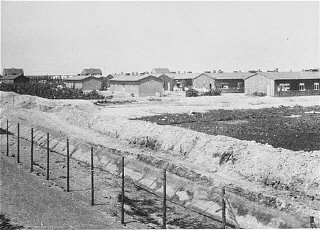 The Westerbork camp was situated in the northeastern part of the Netherlands in the Dutch province of Drenthe, near the towns of Westerbork and Assen. The Dutch government established a camp at Westerbork in October 1939 to intern Jewish refugees who had entered the Netherlands illegally. The camp continued to function after the German invasion of the Netherlands in May 1940. In 1941 it had a population of 1,100 Jewish refugees, mostly from Germany. READ MORE  |
Más sobre Westerbork
57: Wobbelin
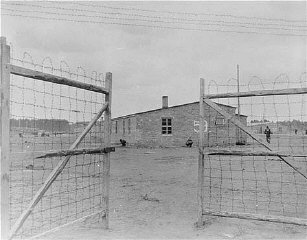 The Wöbbelin camp, near the city of Ludwigslust, was a subcamp of the Neuengamme concentration camp. The SS had established Wöbbelin in early February 1945 to house concentration camp prisoners whom the SS had evacuated from other camps to prevent their liberation by the Allies. At its height, Wöbbelin held some 5,000 inmates, many of whom were suffering from starvation and disease. READ MORE  |
Más sobre Wobbelin